Zooarchaeology and Field Ecology Field school
Zooarchaeology is an interdisciplinary subfield of archaeology focused on the analysis of animal remains from archaeological contexts to address questions involving past human foraging behavior, paleoecology, and paleoclimate. The foundation of this research is the identification of archaeological vertebrate bones and teeth but much of the meaning of those data resides in knowledge about the behavior, ecology, and natural history of the identified species. This novel, hands-on, laboratory- and field-based course is designed not only to train students in the identification and analysis of fragmentary vertebrate remains but to provide them with a rich background in the natural history of vertebrate animals that is essential to conducting zooarchaeological research. Unlike any other archaeological field experience, students will gain expertise in the identification of fragmentary vertebrate remains from archaeological contexts in the western U.S. and at the same time be immersed through daily field trips in the natural history and ecology of local vertebrate animals in a remote and scenic setting in Range Creek Canyon, Utah. Topics that will be covered include foraging theory, prey choice, the nature of the archaeofaunal record, units of quantification, taphonomy, ecological concepts and theory, vertebrate taxonomy and natural history, and skeletal preparation. Students gain additional experience in archaeological vertebrate identification and analysis through the completion of a problem-oriented research project based on the analysis of one of several provided faunal assemblages from sites in western North America. Students attend and present their research at the 19th Annual Zooarchaeology Conference held at the Range Creek Field Station the last day of the field school and thus attain invaluable experience in delivering professional conference presentations as well as the opportunity to network with prominent zooarchaeologists.
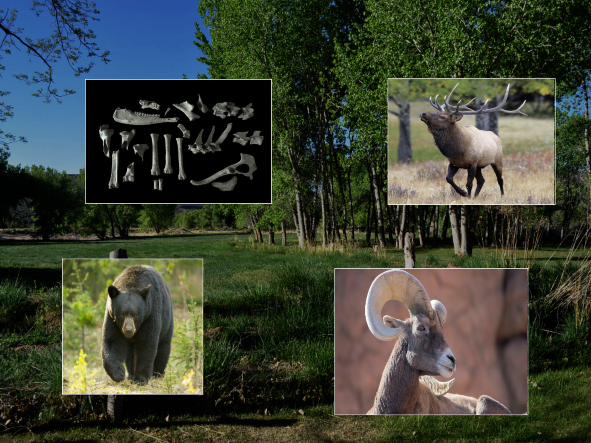
Program Dates: May 5-May 31, 2025
Course Structure and Organization:
The course will begin (May 5-9) with five-day intensive introduction to zooarchaeology, vertebrate osteology, and natural history by zoom. Students will then meet in Salt Lake City (May 12) and we will proceed from there on a 6-day camping field trip across the state of Utah. We will explore many of the most important archaeological sites in the Great Basin and Colorado Plateau (e.g., Danger Cave, Hogup cave, Lakeside Cave, Homestead Cave, Cowboy Cave, Sudden Shelter, Bonneville Estates Rockshelter) and study the different habitats and vertebrate faunas of the regions. We will then stay for the remainder of the course (May 18-30) at the remote and scenic Range Creek Field Station in eastern Utah with continued field and lab studies and lectures on various topics in zooarchaeology. Students will complete a problem-oriented research project at the field station and present an oral presentation on that work at a conference on May 30. We depart on May 31.
Enrollment limited. Application (see below) is required. Students enroll in University of Utah, Anthropology 5712-section 2; (Field Methods: North America). 6 semester credit hours. Click here for course syllabus.
See a review of this field school on Archaeodirt: http://archaeodirt.weebly.com/field-school-reviews/category/zooarchaeology
Contact Jack Broughton (jack.broughton@anthro.utah.edu) for more information.
Course Instructors:
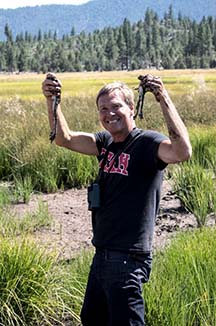 Jack M. Broughton (Ph.D. University of Washington, 1995) is a Professor of Anthropology at the University
of Utah where he teaches archaeology, osteology, and zooarchaeology. His research
focuses on hunter-gatherer zooarchaeology and prehistory in western North America
and the application of behavioral ecology to archaeological issues. Jack is passionate
about zooarchaeology and natural history and has been involved in developing and teaching
this course since its inception in 1988. He is also the author of Zooarchaeology and Field Ecology: A Photographic Atlas, a publication that was created specifically as a text for this unique course. Jack M. Broughton (Ph.D. University of Washington, 1995) is a Professor of Anthropology at the University
of Utah where he teaches archaeology, osteology, and zooarchaeology. His research
focuses on hunter-gatherer zooarchaeology and prehistory in western North America
and the application of behavioral ecology to archaeological issues. Jack is passionate
about zooarchaeology and natural history and has been involved in developing and teaching
this course since its inception in 1988. He is also the author of Zooarchaeology and Field Ecology: A Photographic Atlas, a publication that was created specifically as a text for this unique course. |
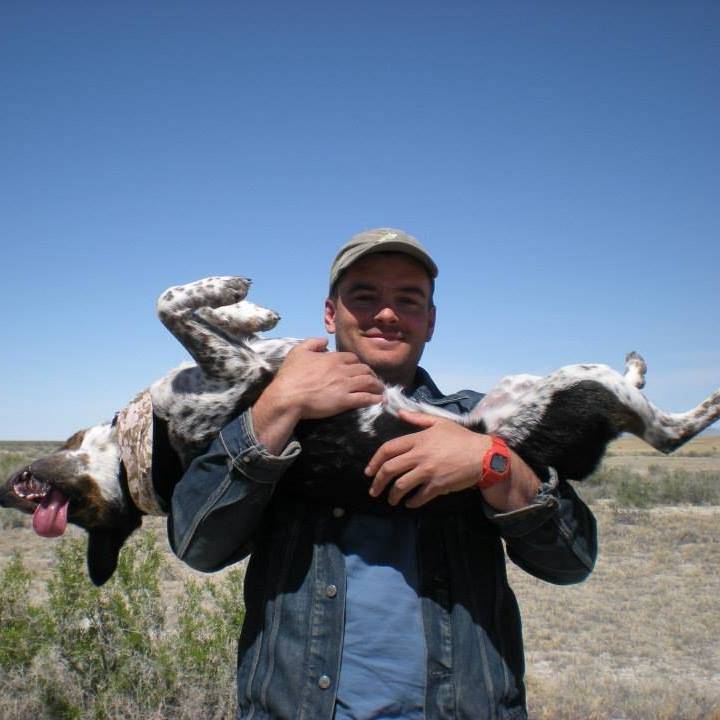 Isaac A. Hart (Ph.D. University of Utah, 2017) is a Post-Doctoral Zooarchaeological Research Fellow at the Department of Anthropology, University of Utah. His research focuses on the archaeology of western North America and Mongolia and paleoenvironmental reconstruction and prehistoric human subsistence based on the analysis of archaeological vertebrates, geological sediments, and fossil pollen. Isaac has been with the field school program for over a decade. |
Accomodations:
This course will take place at the Range Creek Field Station (https://nhmu.utah.edu/range-creek), an isolated facility located in Range Creek Canyon of eastern Utah. The area has a rich and unusually pristine archaeological record and offers a unique set of biological communities, including an incredibly rich vertebrate fauna. Moose, elk, black bear, mountain lion, mule deer, bighorn sheep, and bison are among the many vertebrate taxa found in the region. The Range Creek Field Station is managed by the Utah Museum of Natural History and includes a research laboratory, bathrooms, kitchen, faculty cabins, and a student lounge. Students camp in tents in a beautiful meadow under a canopy of cottonwoods on the station grounds.
Meals:
Breakfast, lunch, and dinner will be provided on the field trips and at the field station and are included in the course fee. Please let us know when you apply for this program if you have special dietary needs, as well as any medical or physical conditions. We will advise you accordingly.
Field Trips:
Students will visit a wide range of local prehistoric and historical archaeological sites and ecological communities in the Range Creek area as well as in surrounding areas of the state of Utah. Strenuous hiking is involved.
Travel to Salt Lake City:
Students will meet at 10 am in a designated location (TBP) in Salt Lake City on May 12. We will depart from there on the 6-day field trip. Plan return flights no earlier than 5 pm on May 31.
Tuition and Fees:
Students are responsible for paying upper-division level tuition as assessed by the University of Utah. Students should figure tuition according to Resident fees as there is no Non-Resident tuition assessed for summer courses. Note that tuition amounts are subject to change without notice. The exact tuition for Summer 2025 will not be available until sometime during April 2025 (for 6 credit hours last summer it was $2860.00). There is also a special fee of $850.00 for the course that is used to cover room and board, field trips, vehicle rentals, and other expenses. The total cost is thus ~$3710.00. Tuition and course fee is due in early May 2025. All participants must enroll in the course for the full 6 credit hours.
Enrollment, Application, and Experience:
Admission to the field school is limited to 8 students and applicants must complete the application form as soon as possible (email application to: Jack Broughton). No previous field experience or background in zooarchaeology is required and we welcome a wide range of academic backgrounds. Applicants must be able to meet the strenuous demands of hiking in the rugged but scenic setting of Range Creek Canyon and the surrounding region.
Insurance:
Participants must provide their own health insurance. Student health insurance plans
are available through the University of Utah. Please contact:
Student Insurance Office
Wasatch Clinic
555 Foothill Blvd.
Salt Lake City, Utah 84112
1-801-585-6949
Financial Assistance:
Financial Assistance can potentially be obtained through the office of Financial Aid and Scholarships
Testimonials:
"This field school was honestly the best thing I did during my undergraduate career. The group was small (they limit it to 8 students), so everyone was able to get a lot of one-on-one attention from the instructors who are at the top of their respective fields. We also were able to become a close-knit group and the faculty got to know us all really well. (Which is how I decided to attend University of Utah for graduate school to work with Dr. Broughton!). This field school gave me a strong foundation of zooarchaeological and ecological skills and knowledge. We learned how to identify fragmentary vertebrate remains both in the lab and in the field, with a focus on the animals of western North America, and we learned all about taphonomy and quantification of animal remains. We also learned all of the taxonomy and ecology of these animals, which is essential background knowledge for a zooarchaeologist. Furthermore, we learned about behavioral ecology and its application to zooarchaeology with an emphasis on foraging theory and prey choice models. And, as having a comparative collection is essential to zooarchaeological research, we learned how to prepare skeletal specimens and study skins from deceased animals. We also gained invaluable experience planning and conducting a research project, writing a scientific paper, and presenting at a conference. The low student-to-instructor ratio allowed for a lot of one-on-one learning and advice. This field school is one of a kind—it is the only zooarchaeological field school in the U.S., if not the world. Whether you want to specialize in zooarchaeology or you just want to add another skill to your archaeological repertoire, this is the field school for you... They [the faculty] are behavioral ecologists, and as such subscribe to a scientific (rather than an interpretive) framework for archaeology. I learned more during this field school than I could have during a full semester in a classroom, and I got to do it in a beautiful place. You will come away from this field school with the knowledge and experience you need to conduct your own zooarchaeological research. Not only that, but you will really get to know the instructors and the other students, so it is an invaluable opportunity for networking. But most importantly, this field school is a blast! I would absolutely recommend this field school. Even if you don’t want to specialize in zooarchaeology, every archaeologist should be capable of identifying bones. So if you are willing to put in the work and eager to have a lot of fun with awesome people in a beautiful place, this is the field school for you!"

"Choosing to attend the Zooarchaeology and Field Ecology Field School was one of the best choices I ever made. It is simply amazing how many memories you can make, how many friends you can meet, and how much you can learn in just one month. The entire field school is based on hands-on learning; not a day went by that we did not spend time with the exhaustive comparative collection, identify animal species out in the field, or work with actual archaeofauna from sites all around North America. The research paper prepared in the last week of the course and an opportunity to present this paper at the Zooarchaeological Conference are also invaluable experiences. Throughout the entire field school the professors provided attentive, one-on-one help; they really got to know us and worked hard to help us succeed. I came away from the course not only extremely knowledgeable about field ecology and zooarchaeological methods; I came away a fuller person, even more dedicated to my chosen career and now with the experience and skills to practice it anywhere I wished."

Katie August, Undergraduate, University of California, Davis
"I attended the Zooarchaeology and Field Ecology course through the University of Utah and it was an experience I will never forget. As an undergraduate studying Wildlife Science and Archaeology I was hard-pressed to find a field school, not to mention a career involving both of my interests. I stumbled upon the ZOFE course and applied hoping that I had finally found my calling and I couldn't have been more right. In this course, I acquired tools including knowledge of vertebrate skeletal anatomy, ecology, archaeology, and field methods while being simultaneously immersed in the fascinating prehistory of the region. A huge bonus was the numerous hiking trips and field excursions we took throughout the course that involved observing and studying animals in the wild. We also developed and conducted our own independent research projects with the help of our instructors and peers that we then presented at the Stanley J. Olsen Zooarchaeology Conference. Our time at the Field Station was fleeting, but the skills and the memories I took away from the course will last me a lifetime and I would encourage anyone with an interest in wildlife, anthropology, or even just history to take this course."
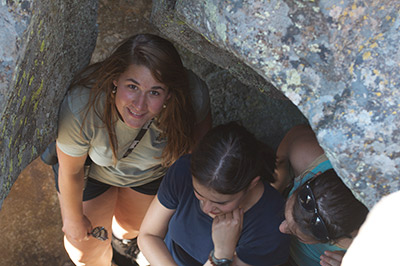
Jessica Rodkey, Undergraduate, Purdue University
"The Zooarchaeology and Field Ecology Field School is a most unique combination of archaeology, natural history, and field ecology. The small class size, passionate instructors, and unique field station location made it without a doubt the most fun, rewarding, and intense learning experience I have ever had. The classroom lectures, lab activities, and the daily hikes are all intertwined to reinforce the large amount of material that is introduced in a short amount of time. The camping trip to see important archaeological sites and the zooarchaeology conference held at the end were both invaluable experiences as well. The opportunity to design an independent project and then present it to a small group of professional zooarchaeologists in such a laid-back setting was an experience that to my knowledge can be accomplished nowhere else. I would recommend this program to any zooarchaeologist, field or wildlife biologist, paleontologist, or anyone who has an appreciation of natural history!"

Kathryn Mohlenhoff, Graduate Student, Portland State University
“Participating in the Zooarchaeology and Field Ecology field school was one of the best experiences I have ever had. The school balances a focus on vertebrate osteology and archaeofaunal research with hands-on animal and plant identification. The course is rigorous; however there was never a dull moment and the information I learned has really stuck with me. One of the best parts of this field school is the daily hikes and field trips to some of the most significant archaeological sites in the region. These trips, which were a total blast, reinforced what we learned in lecture and lab by letting students observe and identify live animals and plants, as well as encouraging us to make on-the-spot vertebrate bone identification. Aside from being in a truly beautiful and diverse environment, working with the Professors was an amazing opportunity. They make an excellent teaching team and they gave us the tools to make our own identifications and design our own research projects. I had a great time working on my final project and participating in the Stanley J. Olsen Zooarchaeology Conference. This conference was a great opportunity to experience what zooarchaeological research is like, as well as to hear from other zooarchaeologists about their research. The other students were interesting, hard-working, and fun – it was a wonderful group of people to work with. I would recommend this field school to anyone interested in zooarchaeology, archaeology, biology and ecology."

Molly Barnewitz, Undergraduate, University of Utah
"I attended the Zooarchaeology and Field Ecology field school…I had a blast the whole time, and the course was one of the most valuable and memorable experiences of my life. The intense laboratory and lecture component, in-the-field observation of animal ecology, field trips to important archaeological sites and the pristine setting of the field station combine to make it truly unique among field school experiences. The highlight for me was being able to present the findings of my research project at the Stanley J. Olsen Zooarchaeology conference, held the last weekend of the course. Overall, it was a great supplement to the archaeological field methods course I had done the year before, and I highly recommend the course to anyone interested in zooarchaeology, regardless of experience."

Isaac Hart, Graduate Student, University of Utah
"The Zooarchaeology and Field Ecology course was one of the best classes I have ever taken. The unique learning environment allowed for an in-depth examination of local fauna, which aided my understanding of animals in nature, and how surroundings affect zooarchaeological remains. The course was an intense four weeks of non-stop learning and non-stop fun. Every field trip and hike was an adventure and educational opportunity I would gladly relive. The chance to present research to peers and professionals at the Stanley J. Olsen Conference was a fantastic conclusion to the course. I would recommend this course to any student, especially those interested in zooarchaeology and ecology".
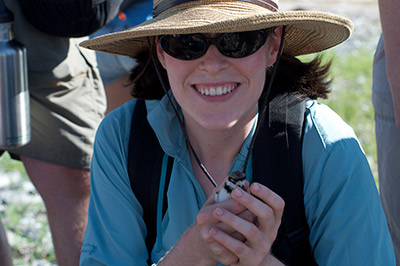
Kate Barnewitz, Undergraduate,University of Utah
Photo Gallery

Nocturnal field trips catching and observing amphibians— such as Woodhouse’s toad.
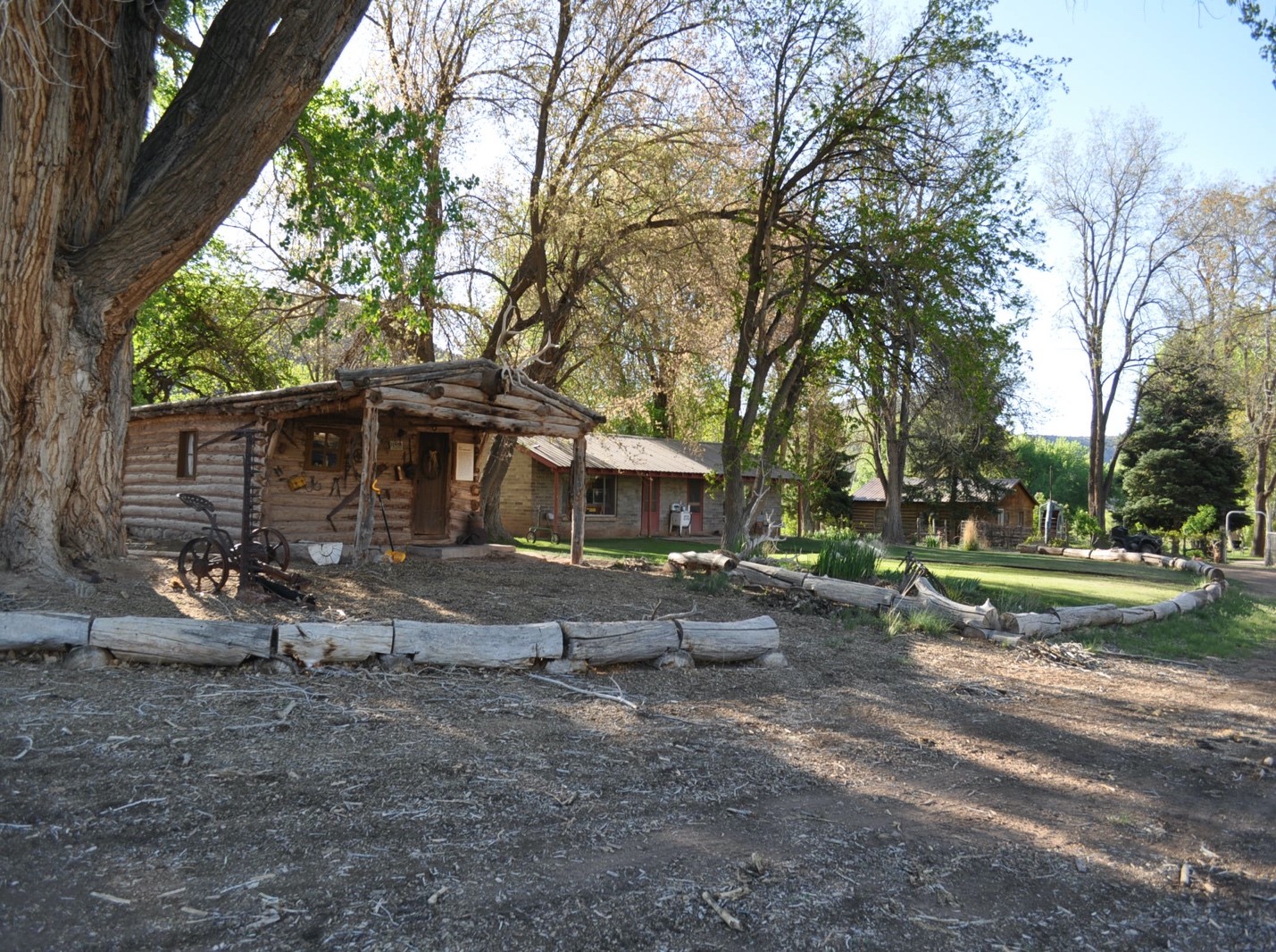
The Range Creek Field Station. Faculty cabins at right and left; laboratory at center.

Range Creek Field station in early May—an oasis for migratory songbirds (and students!).
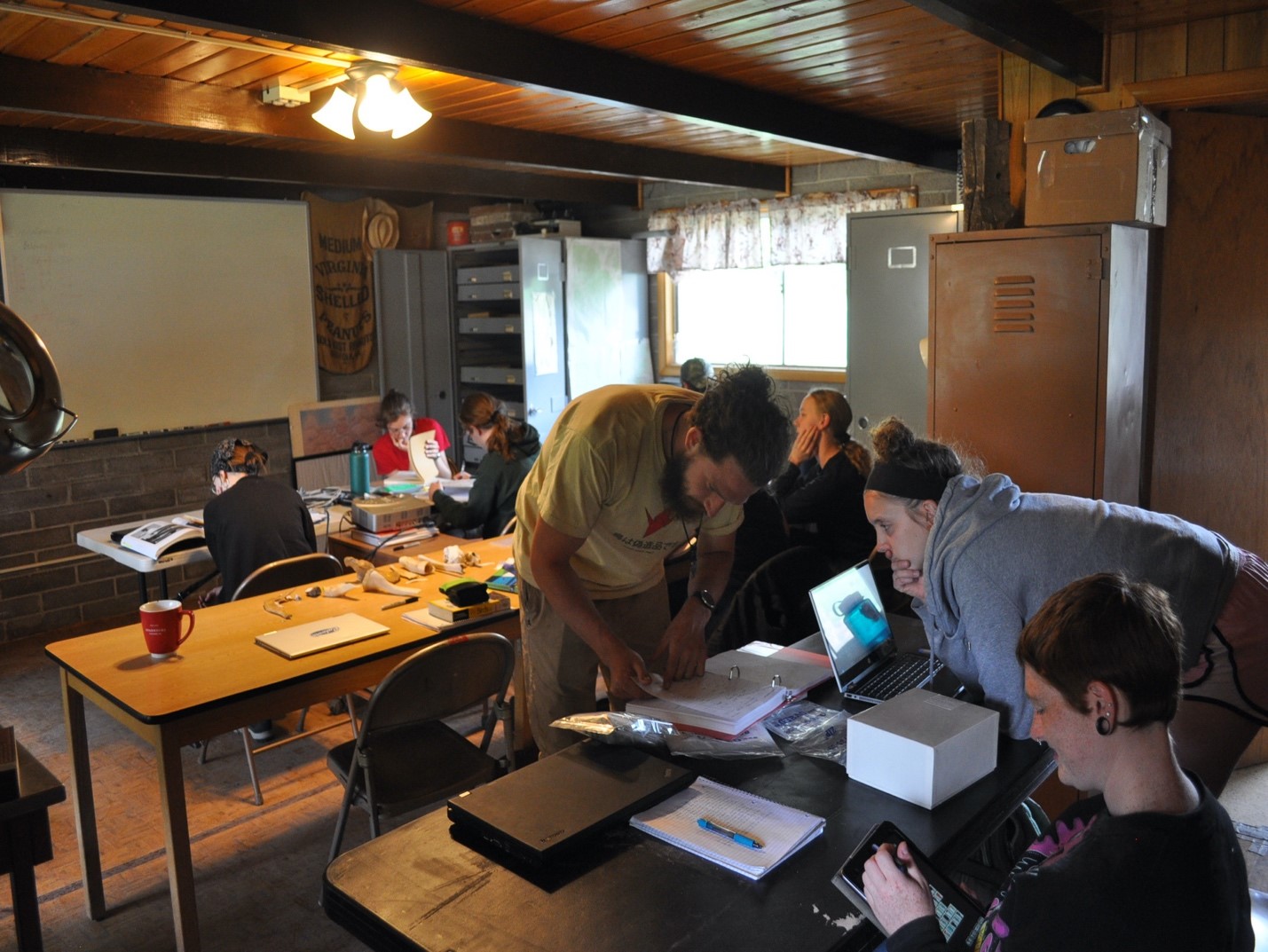
Students working in the Zooarchaeology Laboratory, Range Creek Field Station.

View of the mouth of Cowboy Cave (on right), Utah. Fauna from the site is the source
for our class-level research project. Individual student projects can focus on particular
aspects of the fauna from this site or others from the region.

Students explore the interior of Homestead Cave—a stop on our 5-night field trip
across the eastern Great Basin and Colorado Plateau.
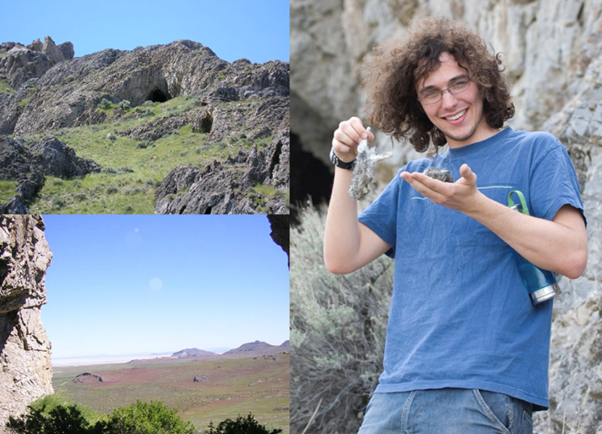
Homestead Cave, Utah. Clockwise from upper right; mouth of the cave, student with
owl pellet material, view east from the cave.
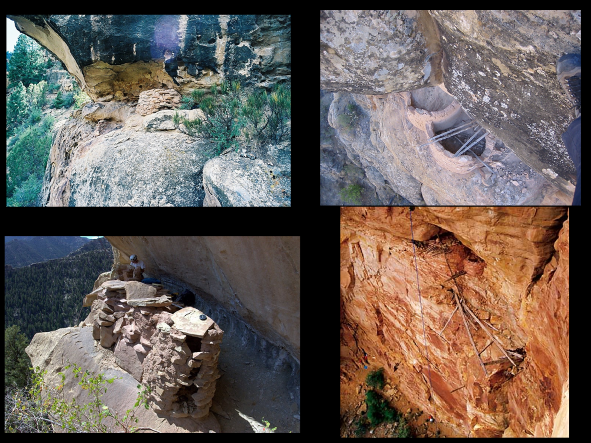
Cliffside granaries, part of the remarkable archaeology of Range Creek Canyon.

